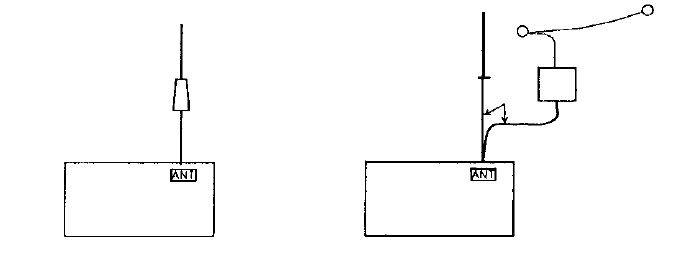
offered by Busse-Yachtshop.com
7. INSTALLATION
7-2
7.2 Antenna Unit
The performance of the facsimile receiver is directly related to the antenna
installation. In general, the antenna should be installed as high as possible on
the vessel, free from the influence of nearby antennas, rigging and masts. Be
sure to locate the antenna well away from TX antennas and noise generating
equipment. Pay particular attention to the antennas of MF and HF radio
equipment - they can damage the facsimile receiver through induction. (For
better protection against induction, use the preamp unit.)
7.2.1 General antenna connection
Connect the antenna to the facsimile receiver as shown below. If the preamp unit
is installed, set jumper block J23 on the RCV Board (in the FAX-30) to the
"ACTIVE" position. See paragraph 7.4.
Preamp Used Preamp Not Used
Facsimile
Receiver
2.6 m Whip Antenna
Preamp
(FAX-5)
Coaxial Cable
Facsimile
Receiver
6 m Whip
Antenna
Wire Antenna
Junction
Box
Select
one.
Antenna wiring and preamp status
7.2.2 Wire antenna or whip antenna
• Either a long wire or whip antenna may be used. A wire antenna should be 15
meters or longer including the vertical section. A whip antenna should be 6
meters long.
• The antenna can be shared with other receivers; use an antenna switch or
junction box.
• Connect the antenna to the facsimile receiver with a coaxial cable of which the
diameter is larger than coaxial cable type 5D-2V. (5D-2V is a JIS (Japan
Industry Standard) Cable. Use equivalent cable, referring to the table in
paragraph 7.3.
• If sensitivity of the wire antenna is low, use the preamp unit.


















